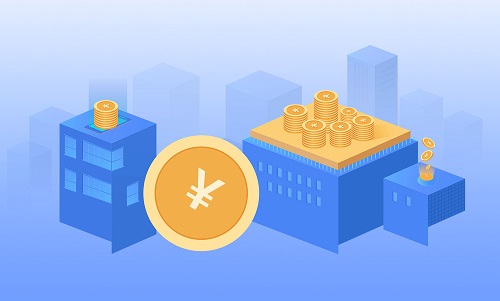Image source: Visual China
BEIJING, June 1 (TiPost) -- A feasibility study report on a high-speed railway line linking Weifang in Shandong province with Suqian in Jiangsu province has been approved by the National Development and Reform Commission recently, according to the Jiangsu Transport Bureau. The construction of the railway section is scheduled for 2023 and the completion of the construction for June 2028.
The 74-kilometer Weifang-Suqian high-speed railway is 399 kilometers long, with 12 stations. The railway, as a section of the second Beijing-Shanghai high-speed railway, will run across Jiangsu province and the other sections across Shandong province, with an estimated investment of about 15.45 billion yuan.
 【资料图】
【资料图】
The second Beijing-Shanghai line will eventually go across Beijing, Tianjin, Hebei (Cangzhou), Shandong (Binzhou, Dongying, Weifang, Rizhao, Linyi), Jiangsu (Xuzhou, Suqian, Huaian, Yangzhou, Taizhou, Nantong, Suzhou) and Shanghai, marking the formation of the "eight-vertical-line and eight-horizontal-line" high-speed railroad network in China upon the completion of the second Beijing-Shanghai railways route’s construction.
The second Beijing-Shanghai high-speed railway has more than 40 stations, almost twice as many as the first one. It means that the second line will see a relatively slow speed as the result of connecting more cities to the high-speed railway.
The Beijing-Shanghai line is one of the "eight vertical" lines of the "eight-vertical-line and eight-horizontal-line" high-speed railroad network, according to China National Medium and Long-term Railroad Network Plan released in 2016. The Beijing-Shanghai railway includes double lines. Among them, the Beijing-Shanghai high-speed railway, which was built in one phase, started operations in 2011, running through Beijing-Tianjin-Jinan-Nanjing-Shanghai (Hangzhou), with a maximum speed of 350 kilometers per hour.
The region between Beijing and Shanghai is China’s economic powerhouse with the largest population, the largest number of cities and the most developed industries in China. Therefore, the Beijing-Shanghai high-speed railway is the busiest and most profitable high-speed railway line in China. It runs through 7
provinces and cities, covering 10 cities with a GDP of over one trillion yuan and 6 cities with over 10 million people.
On January 16, 2020, Beijing-Shanghai High Speed Railway Co., Ltd. debuted on the Shanghai Stock Exchange, becoming the "first stock of China High Speed Railway".
According to the financial report of Beijing-Shanghai High Speed Railway, its net profit reached 11.068 billion yuan in 2019 before the pandemic, with the highest annual passenger flow of 210 million. In the first quarter of this year, a profit of 2.226 billion yuan was achieved.
The second Beijing-Shanghai high-speed railway was included in the "eight-vertical-line and eight-horizontal-line" high-speed railway network as early as 2016. However, unlike the first Beijing-Shanghai high-speed railway, the second line is built in multiple phases and consists of multiple railroad sections. It comprises Beijing-Tianjin Intercity Railway (in operation), Tianjin-Weifang (under construction), Weifang-Suqian (approved), Suqian-Huaian (in operation), Huaian-Yangzhou (in operation), Yangzhou-Nantong (under construction) and Nantong-Shanghai (in operation) high-speed railways.
In the short term, the lifting of pandemic prevention and control measures will result in the pick-up of passenger traffic. In the medium and long term, the economic growth along the high-speed railway will continue to fuel the growth of passenger traffic. However, considering the long running hours and different stations, the second Beijing-Shanghai high-speed railway will play a limited role in taking over the passenger flow of the first railway, according to IFC Securities.














































































